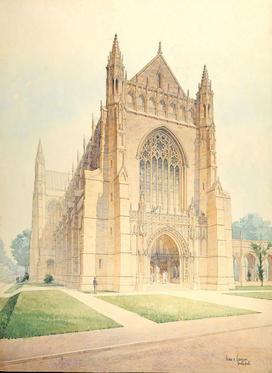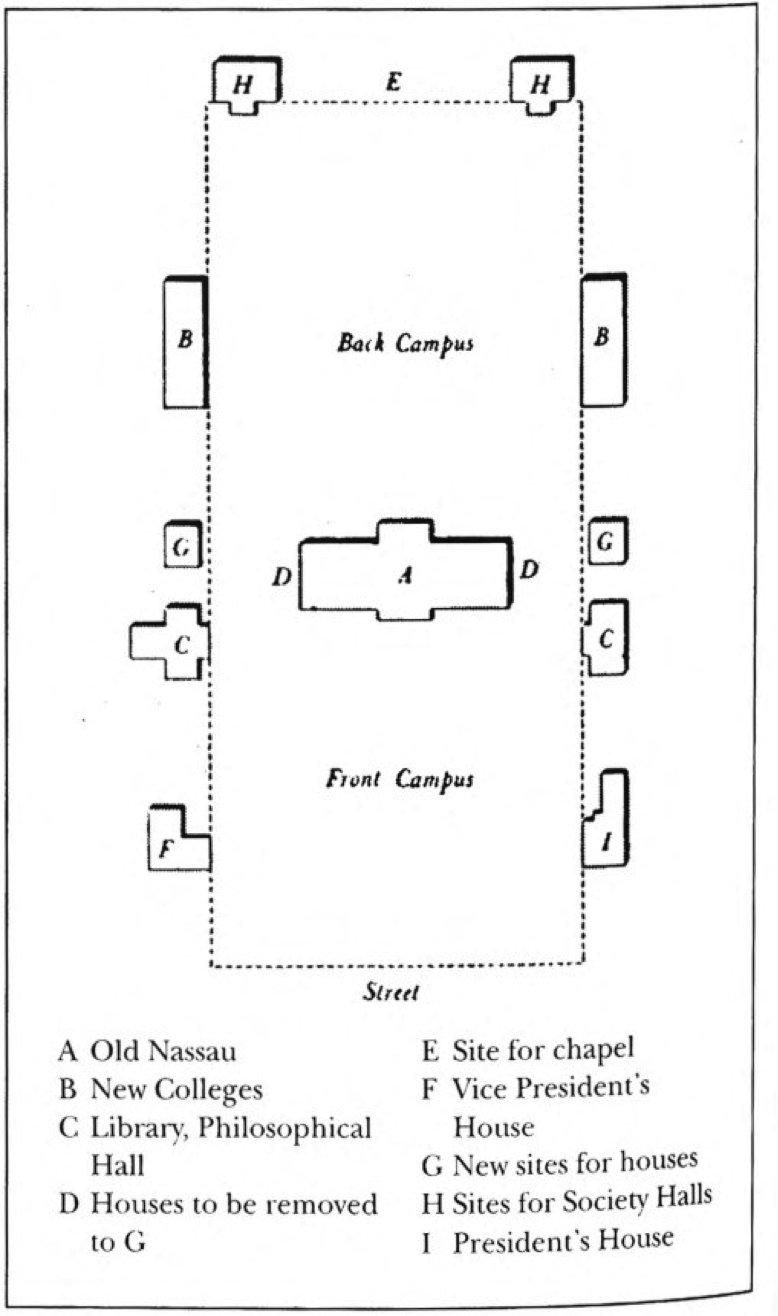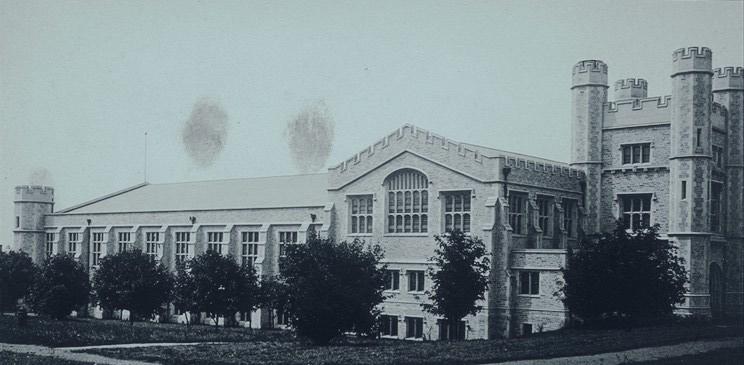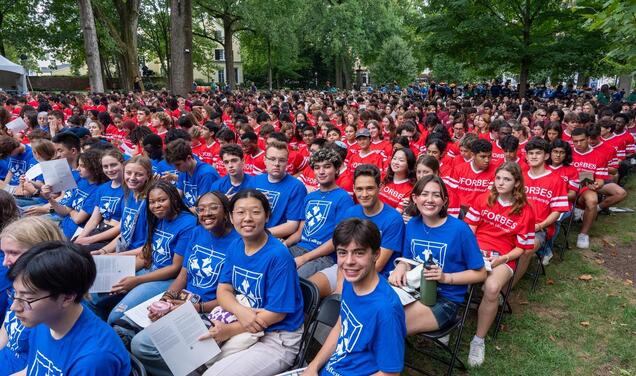
All great writers who have thoughts begin their pieces with quotes from others. So, too, will I quote the timeless classic High School Musical:
If you wanna be cool, follow one simple rule:
Don’t mess with the flow, no, no; stick to the status quo!
— Azza Cohen ’16, TheDaily Princetonian joke issue, Jan. 9, 2015

If abusing two-word buzz phrases were a competitive sport (which might seem probable if you watch cable news), “strategic planning” would be a lock to make the Final Four (Hey! The 50th anniversary of the Final Four is coming up! Send a nice thank-you note to Bill Bradley ’65 or Gary Walters ’67). In a culture that confuses strategy with the size of the new Jumbotron at Wrigley Field or the optimal color of one’s toenail polish on Real Housewives, a discussion of strategic trends in higher education clearly has difficulty finding a hearing, partly because it may be hard to tell what it means in that arena. But since Princeton’s now embarked on its second strategic adventure in a decade, it would do us well to consider what it actually can be worth when strategic planning is done right … and not.
For starters, it’s crucial to note that strategy is a military idea going back to the ancient Chinese and Greeks, partly to differentiate the broad concerns of generals from the survival imperative of privates (i.e. tactics), and partly to emphasize that the disjoint pieces of chaotic battles (seen any of those lately?) should serve a larger goal. This concept was polished further across the millennia by such nice folks as Genghis Khan and the British Empire, then brilliantly analyzed by Carl von Clausewitz in the 19th century. Given that long development, it can be sobering to realize how difficult strategy still can be – consider World War I, where a profound misperception of tactical abilities led to strategies that were not only militarily untenable, but lethal on an inconceivable scale (more than 15 million dead) while accomplishing materially little beyond setting up World War II.
These global conflicts introduced military terms into everyday discussion, and when, immediately thereafter, game theory developed in the academic world – in large part at Princeton, with Morgenstern, von Neumann, John Nash *50, Harold Kuhn *50, and a host of others – the language was irresistible, and “strategy” gradually became part of everyday thinking. The boom in business schools then created a “need” for highfalutin corporate analysis, and strategic planning became the shibboleth for organizations everywhere. There have indeed been major, powerful conceptual strides made by deep thinkers, led by guru Michael Porter ’69, who has his own Institute for Strategy and Competitiveness at Harvard Business School. (No, “Fair Harvard” is ineligible for our Final Four; it’s not a buzz phrase, it’s an oxymoron.) But that, of course, doesn’t ensure rational strategic planning today at someplace like, oh, Enron maybe, anymore than von Clausewitz’s very clear concepts ensured successful military campaigns in the carnage of World War I.
When a college uses “strategic planning” as a vehicle, furthermore, it includes a tacit danger: Education should be constantly addressing change, and ideally leading it (our High School Musical friends notwithstanding), so any worthwhile strategic plan has to incorporate and promote new – or even imaginary, aspirational – things. This ups the risk of confusion, inconsistency, or even outright failure. And sometimes provides convenient, if lame, excuses.
In Princeton’s case, strategic planning fortunately has a pretty decent track record from which a new initiative can draw. It started early in the game (although obviously not by that name), arguably beginning with the calculated move to Princeton from Newark, unprecedented for an American college, in 1756. Our early support of the hard sciences not only brought the great Professor Joseph Henry to campus in 1832, but resulted in perhaps our earliest planning document:
Henry’s 1836 plan includes a couple instructive touchpoints: It recommends moving buildings to suit the status quo, a precursor to such as the move of Corwin Hall in 1963 to make way for the new Robertson Hall for the Wilson School; and it theorizes entire new functions in the original stucco Whig and Clio Halls (built thereafter in 1838), and a chapel between them, which was never built. This brings to mind a hallmark of strategic plans: Many of their elements never see the light of day, or upon seeing it vanish with the mist, being too aggressive, obsolete, or even too scary. A more recent example: The various plans for a student center over many decades (Whig-Clio offered Clio Hall when the two groups merged in 1928, for example) defy enumeration, but Princeton went through the entire 20th century without one, before Frist.
Planning, money and institutional ego combined at the end of the 19th century in the person of Moses Taylor Pyne 1877, principal enforcer of the new collegiate-gothic approach to institutionalizing Princeton’s ambitions in the Oxbridge mold. This included academic buildings like Pyne Library (and its dark downside, the leveling of East College, “The Crime of ’96”) , dorms like ’79 Hall and Blair Hall, and even the huge new University Gymnasium (where Dillon now sits). And ultimately, Pyne became a huge driver, along with Dean Andrew Fleming West 1874, of the monumental Graduate College in 1913, and its location in glorious solitude.
This gothic imperative complemented a strategic concept of Woodrow Wilson 1879, who intended Princeton to become a challenging academic institution in the forefront of Amereican education. The tactical aspects included the establishment of departments in 1904 (along with gothic Palmer Lab for physics and Guyot Hall for geology, for example), the Grad School, and, famously, the dramatic doubling of the faculty via the hiring of 50 “preceptor guys,” bright young lights in teaching from around the country, to attack the complacent student body in the newly conceived precepts. Intriguingly, this frontal assault has a distinctly military feel to it, right down to dividing the enemy into smaller groups in order to decimate him piecemeal; strategic and then some. This reached its climax in the 1924 Four Course Plan, when Wilson’s young PGs, now senior faculty, created senior independent work in departments (thence the undergraduate thesis), the academic Princeton we know today.
Which leads us to a stark example of tactical failure (even when there aren’t many, the wrong one can obstruct strategic goals for decades). The rapidly increasing emphasis on student research had rendered the stately Pyne Library (now East Pyne) completely inadequate within 20 years of its dedication in 1897, and a larger facility was desperately needed by 1920. Then, the Marquand Chapel burned to the gound, and the trustees, led by President and Rev. (ahem) John Grier Hibben 1882 *1893, put a replacement at the top of their priorities list. The monumental new Chapel was dedicated in 1928, and the strategists then returned to library planning – just in time for the Depression and World War II. Firestone did not open until 1948, after generations of Princeton students had crawled around the bowels of Pyne in desperation.

After that critical delay, Princeton turned immediately to the crowded list of academic needs backed up in its wake. By the late 1950s, the trustees formulated a broad strategic advance combining new facilities (the Engineering Quad to replace various rabbit warrens around campus, the Architecture School, Woolworth for the music department) with the means to implement them promptly, namely the unprecedented $53 Million Campaign. Brought to a successful, oversusbscribed conclusion in 1962 by young president Robert Goheen ’40 *48, it allowed those projects, the Old New Quad (now Wilson College), and the Caldwell Fieldhouse to begin moving academic spaces east and dorms and athletics south. There also were tactical losses, notably including the beautiful green between ’79 Hall and Prospect; the siting of the drop-in architecture and music buildings is still controversial 50 years later. We’d best not discuss New South. But in terms of a pedestrian campus that worked and offered academic, laboratory, and dormitory space sufficient to carry on its mission, Princeton was more strategically sound and focused than any time in memory.
But strategies can be severely, even abruptly, challenged as the world intercedes when we least expect. In 1965, as the entire campus joined in macho celebration of the Final Four team outside the gothic pile of Dillon Gym, it was just common sense to assume that Princeton would educate only men in any foreseeable future.
Next time: Strategic planning meets coed plumbing and Frank Gehry.












No responses yet